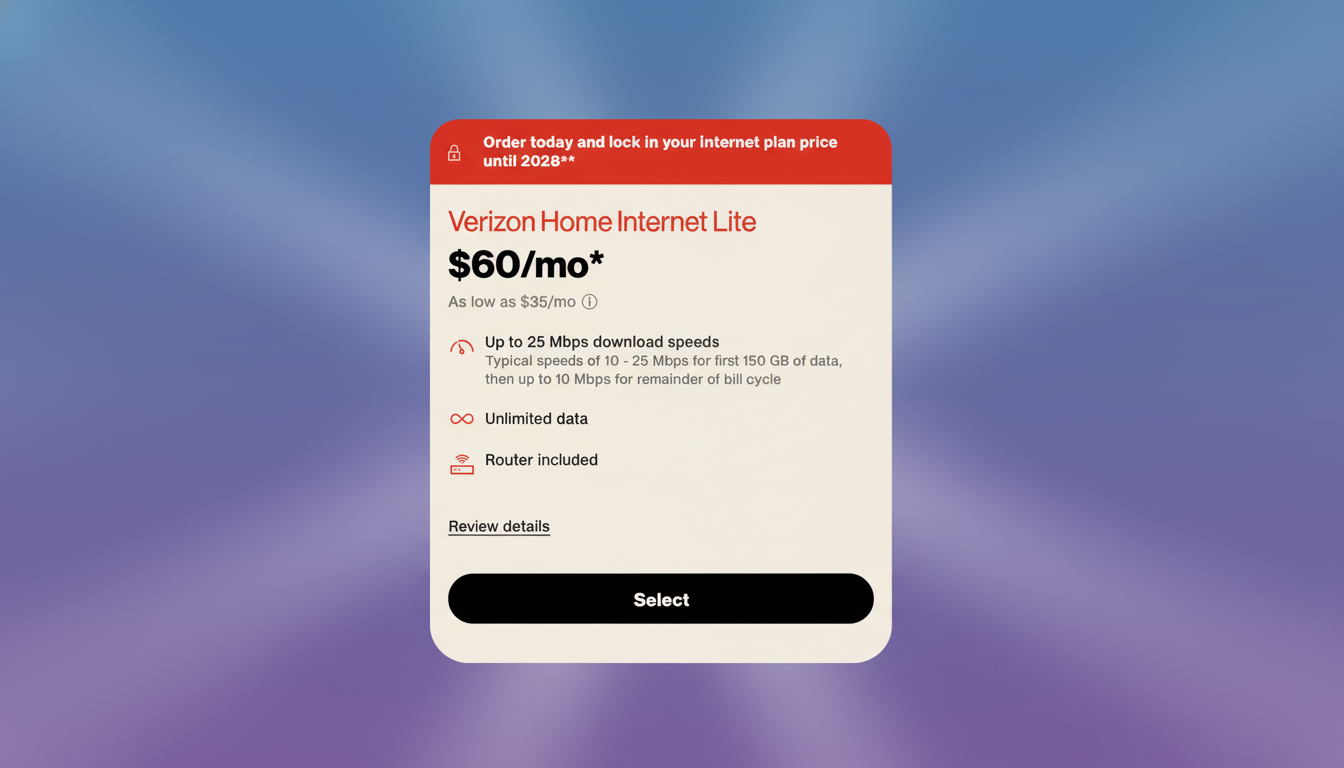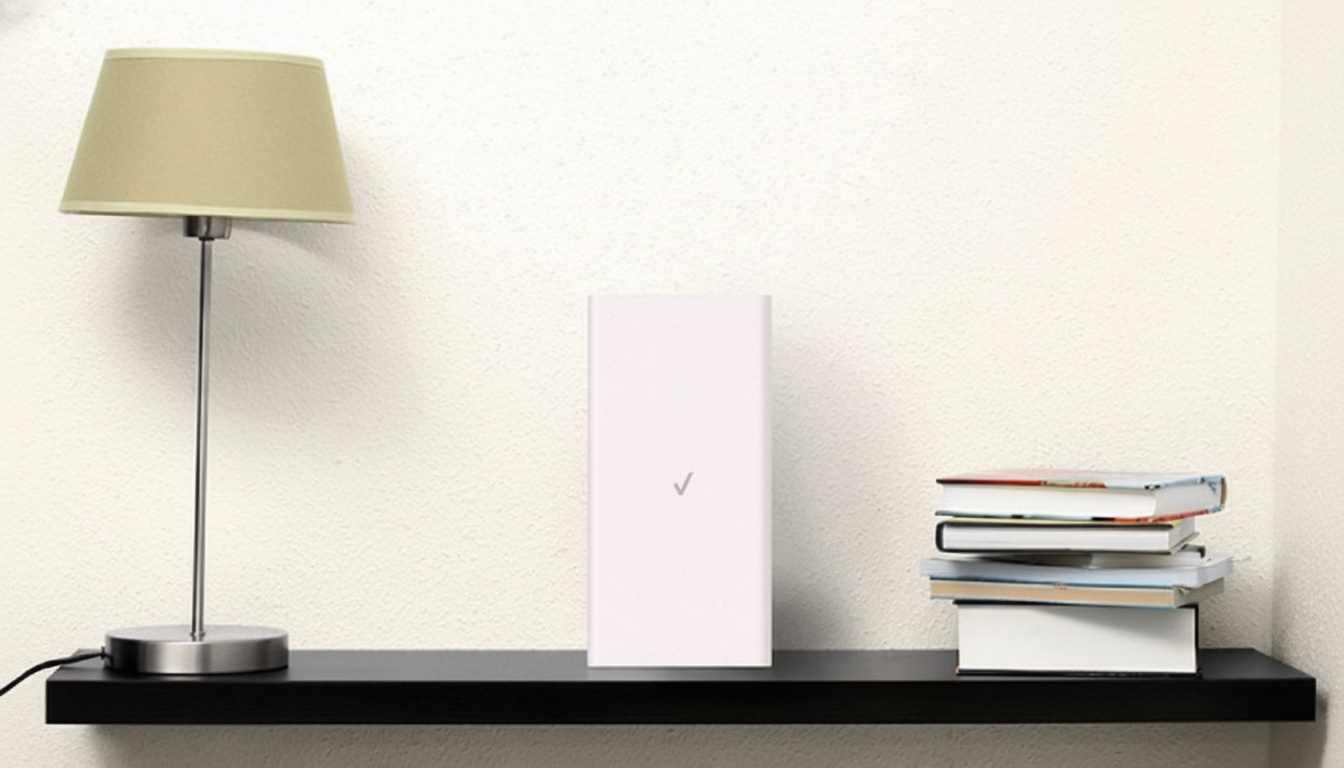Verizon is expanding its simply named fixed wireless network with Home Internet Lite, a lower-priced, data-capped plan that’s targeted at households outside the company’s current 5G Home Internet footprint. The new option — it’s unlimited with the trade-off of slower-than-full 5G data speeds during peak hours — makes that full home service offering much cheaper and more widely available in places where Verizon isn’t selling its real home internet service by using the provider’s middle-of-the-road mid-band 5G instead.
What Lite Can Do and Where It Currently Works
Home Internet Lite is aimed at addresses that fall outside Verizon’s existing 5G Home Internet footprint but within range of its C-band 5G network. The plan boasts download speeds of 10–25Mbps and upload speeds of 2–6Mbps until a monthly data amount totaling 150GB is reached. After that, speeds are slowed to approximately 3 to 10Mbps down and just 1 to 3Mbps up — enough for email and basic browsing needs but a discernible drop for streaming or video calls.

Like Verizon’s unlimited home wireless plans, Lite comes with a self-install receiver that also serves as a Wi-Fi router. The hardware is intended to grab hold of mid-band 5G spectrum for better indoor coverage and adaptability compared to traditional 4G-based fixed wireless, but peak throughput is deliberately capped on this tier.
Availability is hyperlocal. Verizon’s customers in urban areas where the carrier already offers unlimited 5G Home Internet will continue to see those plans. In ZIP codes that are more rural, where 5G coverage is available and the unlimited service isn’t advertised, Verizon now defaults to Lite.
Pricing Details and the Fine Print for Home Internet Lite
Verizon is advertising introductory pricing “starting at $25 per month” for existing postpaid mobile customers with autopay and paperless billing. That loyalty discount lasts for 36 months. There is a $5 monthly charge for mobile bundle customers after the promotion ends.
Those without Verizon mobile service will pay $50 a month with the same autopay and paperless criteria. Those numbers are in line with Verizon’s base unlimited 5G Home plan, but the trade-off is you’re capped at 150GB on Lite — and have lower baseline speeds. There are no annual contracts and the equipment comes with the service.
The FCC’s Broadband Facts label for sample rural locations includes the speed bands before and after the cap, so shoppers can compare like with like. Verizon’s disclosures make clear just how slow the post-cap experience would be — useful context for families debating streaming habits and monthly data limits.
How It Compares With Rivals in Home Internet Market
T-Mobile introduced a capped version of T-Mobile Home Internet in 2022 with 100GB and 150GB options, each with an aggressive throttle down to 128 kbps once the cap is hit — rendering modern apps virtually unusable. Verizon’s post-cap speeds, though limited, are also not as restrictive and should still allow you to perform basic tasks.

In much of rural America, the only real alternative is satellite. SpaceX’s Starlink has been offering internet service for as low as roughly $59 in some areas, but standard pricing typically hovers around $120 a month — plus the cost of equipment. Verizon has positioned Lite as a more affordable, simpler configuration that can undercut satellite monthly rates — even if actual speeds and reliability will depend on signal quality and network congestion.
AT&T, which also plays in fixed wireless with Internet Air, hasn’t unfurled any kind of capped, lower-cost tier. Which leaves price-sensitive households that don’t have cable or fiber (or want to avoid the installation and fees that come with them) as Verizon’s and T-Mobile’s main battle zone.
Who This Plan Is Good For and Who Should Pass
Lite is ideal for light to moderate users who prefer the comfort of a predictable bill: email, social media, cloud docs, and limited streaming. Industry estimates slot HD streaming at around 3GB per hour and 4K streaming between 7 and 10GB an hour. Which is to say, 150GB could support perhaps 50 hours of HD video — much less in 4K — before throttling sets in.
Households with multiple 4K streams, heavy video conferencing, or significant game downloads probably will outgrow the cap rapidly and should turn instead to unlimited fixed-wireless service, cable internet, or fiber where available.
For others, particularly in on-the-fringe coverage areas where satellite is the de facto, Lite could mean lower monthly pricing and a simpler piece of hardware with acceptable daily usage.
The rollout is an example of the extent to which fixed wireless has gone from a temporary solution into a mainstream service option for broadband. By providing a data-capped tier that lies beyond its 5G unlimited footprint, Verizon is extending the reach of its 5G assets to more addresses — sacrificing raw speed and unlimited data for price and reach. Whether that balance feels fair will depend on the actual amount of data a household uses each month.

